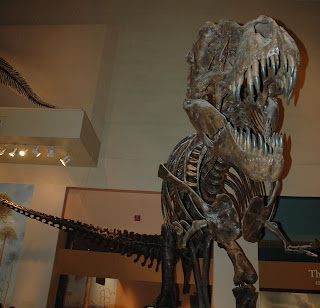Want to know how flu gets named, its ecology, how it evolves, or is trasmitted?
Check the fluwiki here.
Wednesday, April 29, 2009
Swine flu cases continue to rise
The CDC now reports 91 confirmed cases of swine flu in the US including 14 in California. Most likely, cases will continue to rise over the next few days and weeks.
The World Health Organization has raised raise the current level of influenza pandemic alert from phase 4 to phase 5 which means the organization thinks a pandemic is imminent. You can take a look at the WHO's definitions of the different levels here
Remember, frequent hand washing and the use of hand sanitizers will help reduce your chances of getting sick.
The World Health Organization has raised raise the current level of influenza pandemic alert from phase 4 to phase 5 which means the organization thinks a pandemic is imminent. You can take a look at the WHO's definitions of the different levels here
Remember, frequent hand washing and the use of hand sanitizers will help reduce your chances of getting sick.
Tuesday, April 28, 2009
Swine flu update
The CDC is now reporting 64 cases of the swine flu in the US.
Here are recommendations from the CDC's website
What You Can Do to Stay Healthy
There are everyday actions people can take to stay healthy.
- Cover your nose and mouth with a tissue when you cough or sneeze. Throw the tissue in the trash after you use it.
- Wash your hands often with soap and water, especially after you cough or sneeze. Alcohol-based hands cleaners are also effective.
- Avoid touching your eyes, nose or mouth. Germs spread that way.
Try to avoid close contact with sick people.
- Influenza is thought to spread mainly person-to-person through coughing or sneezing of infected people.
- If you get sick, CDC recommends that you stay home from work or school and limit contact with others to keep from infecting them.
Monday, April 27, 2009
Swine flu update
Here are the most recent numbers of laboratory confirmed cases of swine flu in the US as reported on the CDCs website
Kansas 2 cases
New York City 28 cases
Ohio 1 case
Texas 2 cases
TOTAL COUNT 40 cases
Sunday, April 26, 2009
Swine flu
Why is this influenza virus called the swine flu? Its called swine flu because one of the proteins on the surface of the virus is most similar to those found on viruses that affect pigs. However this one is infecting people, not pigs. You can not get this flu from eating pork. It is spread from one person to another. The symptoms include high fever, aches, coughing and congestion.
There are anti-viral drugs like Tamiflu and Relenza that can combat this virus, and they are most effective if you start treatment early. So if you develop symptoms you need to get treated as soon as possible, and avoid contact with other people.
According to the Centers for Disease Control (CDC), twenty cases have been reported in the US including people from California, New York, and Ohio. Only one person was sick enough to be hospitalized. Canada has also recently reported a case. No one in the US has died of the disease as of yet, but over 80 people in Mexico have died.
One of the best ways to avoid infection is to frequently wash your hands. If you are sick, don't go to work, or come to school!
You have also probably heard the word "pandemic" in the news reports about this virus. The word pandemic comes from the Greek words for "all people", and is a disease that spreads across a large area, or even the world.
There are alot of blogs, and news organizations covering this right now. Here are a few links you can check for more information.
Here is the CDC's website on swine flu. It will be updated at least once a day.
Tara Smith is a Professor of Epidemiology and blogs about causes and evolution of diseases on her blog Aetiology
The editors of Effect Measure are public health scientists.
There are anti-viral drugs like Tamiflu and Relenza that can combat this virus, and they are most effective if you start treatment early. So if you develop symptoms you need to get treated as soon as possible, and avoid contact with other people.
According to the Centers for Disease Control (CDC), twenty cases have been reported in the US including people from California, New York, and Ohio. Only one person was sick enough to be hospitalized. Canada has also recently reported a case. No one in the US has died of the disease as of yet, but over 80 people in Mexico have died.
One of the best ways to avoid infection is to frequently wash your hands. If you are sick, don't go to work, or come to school!
You have also probably heard the word "pandemic" in the news reports about this virus. The word pandemic comes from the Greek words for "all people", and is a disease that spreads across a large area, or even the world.
There are alot of blogs, and news organizations covering this right now. Here are a few links you can check for more information.
Here is the CDC's website on swine flu. It will be updated at least once a day.
Tara Smith is a Professor of Epidemiology and blogs about causes and evolution of diseases on her blog Aetiology
The editors of Effect Measure are public health scientists.
Friday, April 24, 2009
National Parks
PBS is broadcasting a new series this fall about our National Parks. Where have you been?
Thursday, April 23, 2009
Surprise , Surprise , Surprise

The New York Times is reporting that a group called the Global Climate Coalition, an industry group that spent millions of dollars advertising that global warming was not was not "well understood", ignored their own scientists. Why? Because the scientists told them the truth-what they didn't want to hear. So while this group,which was made up of oil,coal,and car companies, was involved in advertisement and lobbying to convince folks their emissions were not to blame for global warming, their scientists were telling them just the opposite.
Here's a quote from the article taken from an internal report written by their scientists:
“The scientific basis for the Greenhouse Effect and the potential impact of human emissions of greenhouse gases such as CO2 on climate is well established and cannot be denied,” the experts wrote in an internal report compiled for the coalition in 1995.
At the same time the group was sponsoring advertisements that stated "the role of greenhouse gases in climate change was not well understood." Riiiight....
This reminds me of the executives of the tobacco industry claiming they didn't know nicotine was addictive....
Take a look at the article here
Wednesday, April 22, 2009
New Discovery in Seal Evolution

photo by Alex Tirabasso/Canadian Museum of Natural History
A newly describe fossil from the arctic sheds new light on seal evolution. The fossilized remains of Pujilla darwini indicate the animal walked on land,and had webbed feet, but not flippers. The early seal is estimated to be 23 million years old, and is the oldest fossil found yet of seal ancestors.
The species name honors Charles Darwin who predicted that marine mammals would be found to have evolved from land animals. It also appears that this early seal ancestor lived in fresh water, which is something Darwin had also predicted.
Read more about this discovery here
Tuesday, April 21, 2009
Earth Day at Bolsa Chica
April 18th was a great day for community involvement, and a great day at Bolsa Chica.
Jim Sugra has done yet another great video about Bolsa Chica. Take a look. Are you in the video?
Jim Sugra has done yet another great video about Bolsa Chica. Take a look. Are you in the video?
Saturday, April 18, 2009
Earth Day Celebration at Bolsa Chica
Tuesday, April 14, 2009
Smithsonian Institute National Museum of Natural History Washington D.C.
Spring break usually finds me camping somewhere in southern Utah, miles away from any large city. Not this year however, I took my grand-daughter to Washington D.C. Washington besides the obvious political attractions has the Smithsonian Museums. My favorite ( surprise, surprise) is the museum of Natural History, (although the Air and Space Museum is really cool too.)

Wow! What a Museum! T-Rex! These dinosaurs were big animals! Although I have read recently a hypothesis that suggests they were more scavengers than hunters. The hypothesis is they were big and scary looking to frighten the actual hunters away from the kills, so T-Rex could eat the kills of the other animals in peace.

ooohhhh... from a big dinosaur to a little one.... Archaeopteryx is a transitional form between reptiles and birds. Do birds have bones in their tails? Nope. Do they have teeth in jaws? Nope. Do they have claws on their wings? Nope. (Well one species still does, but only as chicks>) So they why is this fossil a bird? Look at the impression of the feathers. Birds have feathers. This fossil also has a "wishbone" just like chickens and turkeys.

This lovely fossil is of an Ammonite. Ammonites are related to modern day Mollusks like the nautilus, squid and octopus. They were a very diverse group of animals during the Cretaceous Period 144-65 million years ago. They are about 10,000 different species that have been identified.

So what's this lumpy looking fossil? It's one of the first trees! This is a fossil of a plant called Eospermatopteris. These trees grew to a height of about 40 feet. This early tree is about 345 million years old.

This tree is about 100 years old. The cherry trees near the Jefferson Memorial were in full bloom, and just beautiful when we first arrived. It rained a couple days later and the trees lost a lot of their blossoms.


Wow! What a Museum! T-Rex! These dinosaurs were big animals! Although I have read recently a hypothesis that suggests they were more scavengers than hunters. The hypothesis is they were big and scary looking to frighten the actual hunters away from the kills, so T-Rex could eat the kills of the other animals in peace.
ooohhhh... from a big dinosaur to a little one.... Archaeopteryx is a transitional form between reptiles and birds. Do birds have bones in their tails? Nope. Do they have teeth in jaws? Nope. Do they have claws on their wings? Nope. (Well one species still does, but only as chicks>) So they why is this fossil a bird? Look at the impression of the feathers. Birds have feathers. This fossil also has a "wishbone" just like chickens and turkeys.
This lovely fossil is of an Ammonite. Ammonites are related to modern day Mollusks like the nautilus, squid and octopus. They were a very diverse group of animals during the Cretaceous Period 144-65 million years ago. They are about 10,000 different species that have been identified.
So what's this lumpy looking fossil? It's one of the first trees! This is a fossil of a plant called Eospermatopteris. These trees grew to a height of about 40 feet. This early tree is about 345 million years old.
This tree is about 100 years old. The cherry trees near the Jefferson Memorial were in full bloom, and just beautiful when we first arrived. It rained a couple days later and the trees lost a lot of their blossoms.
Subscribe to:
Posts (Atom)